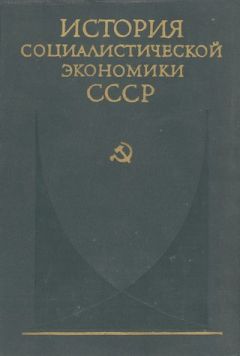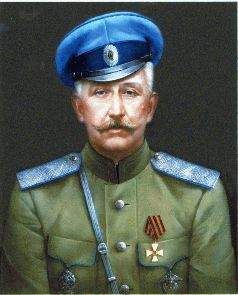2. Sinha, D. (1952). Behavior in a catastrophic situation: A psychological study of reports and rumors. British Journal of Psychology, 43, 200-209.
3. Festinger, L. (1957). A theory of cognitive dissonance. Stanford: Stanford University Press.
4. Kassarjian, H., amp; Cohen, J. (1965). Cognitive dissonance and consumer behavior. California Management Review, 8, 55-64.
5. Tagliaco^o, R. (1979). Smokers' self-categorization and the reduction of cognitive dissonance. Addictive Behaviors, 4, 393-399.
6. Goleman, D. (1982, January). Make-or-break resolutions. Psychology Today, p. 19.
7. Austin American, November 18, 1971, p. 69.
8. Hastorf, A., amp; Cantril, H. (1954). They saw a game: A case study. Journal of Abnormal and Social Psychology, 49, 129-134.
9. Bruce, L. (1966). How to talk dirty and influence people (pp. 232-233). Chicago: Playboy Press, and New York: Pocket Books.
10. Time, November 24, 1980, p. II.
11. Jones, E., amp; Kohler, R. (1959). The effects of plausibility on the learning of controversial statements. Journal of Abnormal and Social Psychology, 57, 315-320.
12. Lord, С., Ross, L., amp; Lepper, M. (1979). Biased assimilation and attitude polarization: The effects of prior theories on subseqently considered evidence. Journal of Personality and Social Psychology, 37, 2098-2109.
13. Ehrlich, D., Guttman, 1., Schonbach, P., amp; Mills, J. (1957). Postdecision exposure to relevant information. Journal of Abnormal and Social Psychology, 57, 98-102.
14. Brehm, J. (1956). Postdecision changes in the desirability of alternatives. Journal of Abnormal and Social Psychology, 52, 384-389.
15. Johnson, D.J., amp; Rusbult, C.E. (1989). Resisting temptation: Devaluation of alternative partners as ameans of maintaining commitment in close relationships. Journal of Personality and Social Psychology, 57, 967-980.
16. Simpson, J.A., Gangestad, S. W., amp; Lerma, M. (1990). Perception of physical attractiveness: Mechanisms involved in the maintenance of romantic relationships. Journal of Personality and Social Psychology, 59, 1192-1201.
17. Wiesel, E. (1969). Night. New York: Avon.
18. White, R. (1971, November). Selective inattention. Psychology Today, pp. 47- 50, 78-84.
19. Глубокий анализ данного процесса, имевшего место в ряде катастрофических политических решений, - см.: Janis, 1. (1972). Victims of group-think. Boston: Houghton Mifflin.
20. Pentagon papers: The secret war. (1971, June 28). Time, p. 12.
21. Freedman, J., amp; Eraser, S. (1966). Compliance without pressure: The foot-in-the-door technique. Journal of Personality and Social Psychology, 4, 195-202.
22. Pliner, P., Hart, H., Kohl, J., amp; Saari, D. (1974). Compliance without pressure: Some further data on the foot-in-the-door technique. Journal of Experimental Social Psychology, 10,17-22.
23. Knox, R., amp; Inkster, J. (1968). Postdecision dissonance at post time. Journal of Personality and Social Psychology, 8, 319-323.
24. Frenkel, O.J., amp; Doob, A. (1976). Post-decision dissonance at the polling booth. Canadian Journal of Behavioural Science, 8, 347-350.
25. Cialdini, R., Cacioppo, J., Bassett, R., amp; Miller, J. (1978). Low-ball procedure for producing compliance: Commitment then cost. Journal of Personality and Social Psychology, 36,463-476.
26. Ibid.
27. Mills, J. (1958). Changes in moral attitudes following temptation. Journal of Personality, 26,517-531.
28. Festinger, L., amp; Carlsmith, J.M. (1959). Cognitive consequences of forced compliance. Journal of Abnormal and Social Psychology, 58, 203-210.
29. Cohen, A.R. (1962). An experiment on small rewards for discrepant compliance and attitude change. In J.W. Brehm amp; A.R. Cohen, Explorations in cognitive dissonance (pp. 73-78). New York: Wiley.
30. Между прочим, следует отметить, что исследование феномена ‹говорю-значит-верю› привело к ряду противоречивых экспериментальных данных. Однако факты в поддержку приведенного в тексте анализа перевешивают. Более детальное обсуждение этого вопроса - см.: Aronson, Е. (1969). The theory of cognitive dissonance: A current perspective. In L. Berkowitz (Ed.), Advances in experimental social psychology (Vol. 4, pp. 1-34). New York: Academic Press.
31. Zimbardo, P., Weisenberg, M., Firestone, 1., amp; Levy, B. (1965). Communicator effectiveness in producing public conformity and private attitude change. Journal of Personality 33, 233-255.
32. Mills, Changes in moral attitudes.
33. Aronson, Е. (1968). Dissonance theory: Progress and problems. In R.P. Abelson, Е. Aronson, W.J. McGuire, T.M. Newcomb, M.J. Rosenberg, and P.H. Tannenbaum (Eds.), Theories of cognitive consistency: A sourcebook (pp. 5-27). Chicago: Rand McNally. Aronson, Е. (1969). The theory of cognitive dissonance: A current perspective. In L. Berkowitz (Ed.), Advances in experimental social psychology (Vol. 4, pp. 1-34). New York: Academic Press.
34. Nel, Е., Helmreich, R., amp; Aronson, Е. (1969). Opinion change in the advocate as a function of the persuasibility of his audience: A clarification of the meaning of dissonance. Journal of Personality and Social Psychology, 12, 117-124.
35. Hoyt, M., Henley, M., amp; Collins, B. (1972). Studies in forced compliance: Confluence of choice and consequence on attitude change. Journal of Personality and Social Psychology, 23, 204-210. Schlenker, B., amp; Schlenker, P. (1975). Reactions following counterattitudinal behavior which produces positive consequences. Journal of Personality and Social Psychology, 31, 962-971. Riess, M., amp; Schlenker, B. (1977). Attitude change and responsibility avoidance as modes of dilemma resolution in forced-compliance situations. Journal of Personality and Social Psychology, 35, 21-30.
36. Cialdini, R., amp; Schroeder, D. (1976). Increasing compliance by legitimizing paltry contributions: When even a penny helps. Journal of Personality and Social Psychology, 34,599-604.
37. Freedman, J. (1963). Attitudinal effects of inadequate justification. Journal of Personality, 31,371-385.
38. Deci, Е. (1975). Intrinsic motivation. New York: Plenum. Deci, Е. (1971). Effects of externally mediated rewards on intrinsic motivation. Journal of Personality and Social Psychology, 18, 105-115. Deci, E., Nezlek, J., amp; Sheinman, L. (1981). Characteristics of the rewarder and intrinsic motivation of the rewardee. Journal of Personality and Social Psychology, 40, 1-10.
39. Lepper, M.R., amp; Greene, D. (1975). Turning play into work: Effects of adult surveillance and extrinsic rewards on children's intrinsic motivation. Journal of Personality and Social Psychology, 31, 479-486.
40. Aronson, E., amp; Carlsmith, J.M. (1963). Effect of the severity of threat on the devaluation of forbidden behavior. Journal of Abnormal and Social Psychology, 66, 584-588.
41. Freedman, J. (1965). Long-term behavioral effects of cognitive dissonance. Journal of Experimental Social Psychology, 1, 145-155.
42. Sears, R., Whiting, J., Nowlis, V., amp; Sears, P. (1953). Some child-rearing antecedents of aggression and dependency in young children. Genetic Psychology Monographs, 47, 135-234.
43. Aronson, E., amp; Mills, J. (1959). The effect of severity of initiation on liking for a group. Journal of Abnormal and Social Psychology, 59, 177-181.
44. Gerard, H., amp; Malhewson, G. (1966). The effects of severity of initiation on liking for a group: A replication. Journal of Experimental Social Psychology, 2, 278- 287.
45. Cooper, J. (1980). Reducing fears and increasing assertiveness: The role of dissonance reduction. Journal of Experimental Social Psychology, 16, 199-213.
46. Conway, М., amp; Ross, М. (1984). Getting what you want by revising what you had. Journal of Personality and Social Psychology, 47, 738-748.
47. Michener, J. (1971). Kent State: What happened and why. New York: Random House.
48. Ibid.
49. Davis, K., amp; Hones, E.E. (1960). Changes in interpersonal perception as a means of reducing cognitive dissonance. Journal of Abnormal and Social Psychology, 61, 402-410.
50. Glass, D. (1964). Changes in liking as a means of reducing cognitive discrepancies between self-esteem and aggression. Journal of Personality, 32, 531-549.
51. Berscheid, E., Boyce, D., amp; Walster(Hatfield), E. (1968). Retaliation as a means of restoring equity. Journal of Personality and Social Psychology, 10, 370-376.
52. Jones, E., amp; Nisbett, R. (1971). The actor and the observer: Divergent perceptions of the causes of behavior. New York: General Learning Press.
53. Shaw, G.B. (1952). In D. Russel (Ed.), Selected Prose. New York: Dodd, Mead.
54. Brehm, J. (1959). Increasing cognitive dissonance by afait-accompH. Journal of Abnormal and Social Psychology, 58, 379-382.
55. Darley,J., amp; Berscheid,E. (1967).Increased liking as aresult of the anticipation of personal contact. Human Relations, 20, 29-40.
56. Lehman, D., amp; Taylor, S.E. (1987). Date with an earthquake: Coping with a probable, unpredictable disaster. Personality and Social Psychology Bulletin, 13, 546- 555.
57. Aronson, E., amp; Mettee, D. (1968). Dishonest behavior as a function of different levels of self-esteem. Journal of Personality and Social Psychology, 9, 121-127.
58. Zimbardo, P. (1969). The cognitive control of motivation. Glencoe, IL: Scott, Foresman.
59. Brehm, J. (1962). Motivational effects of cognitive dissonance. In Nebraska Symposium on Motivation, 1962 (pp. 51-77). Lincoln: University of Nebraska Press.
60. Brehm, J., amp; Cohen, A. (1962). Explorations in cognitive dissonance. New York: Wiley.
61. Aronson, E. (1960). The cognitive and behavioral consequences of the confirmation and disconfirmation of expentancies.Unpublished manuscript, Harvard University, Aronson, E., amp; Carlsmith, J.M. (1962). Performance expectancy as a determinant of actual performance. Journal of Abnormal and Social Psychology, 65, 178-182. Aron-son, E., amp; Mettee, D.R. (1968). Dishonest behavior as a function of differential levels of induced self-esteem. Journal of Personality and Social Psychology, 9, 121-27. Nel, E., Helmreich, R., amp; Aronson, E. (1969). Opinion change in the advocate as a function of the persuasibility of his audience: A clarification of the meaning of dissonance. Journal of Personality and Social Psychology, 12, 117- 24. Aronson, E., Chase, Т., Helmreich, R., amp; Ruhnke, R. (1974). A two-factor theory of dissonance reduction: The effect of feeling stupid or feeling ‹awful› on opinion change. International Journal for Research and Communication, 3,59-74.
62. Rosenberg, M.J. (1965). When dissonance fails: On eliminating evaluation apprehension from attitude measurement. Journal of Personality and Social Psychology, 1, 28-42.
63. binder, D.L., Cooper, J., amp; Jones, E.E. (1967). Decision freedom as a determinant of the role of incentive magnitude in attitude change. Journal of Personality and Social Psychology, 6,245-254.
64. Goethals, G., Cooper, J., amp; Anahita, N. (1979). Role of foreseen, foreseeable, and unforeseeable behavioral consequences in the arousal of cognitive dissonance. Journal of Personality and Social Psychology, 37, 1179-1185.
65. Bern, D.J. (1967). Self-perception: An alternative interpretation of cognitive dissonance phenomena. Psychological Review, 74, 183-200.
66. Jones, R.A., binder, D.E., Kiesler, C.A., Zanna, M., amp; Brehm, J. W. (1968). Internal states or external stimuli: Observers' attitude judgments and the dissonance theory - self-persuasion controversy. Journal of Experimental Social Psychology, 4, 247-269. Piliavin, J.A., Piliavin, 1.M., Loewenton, E.P., McCauley, C., amp; Hammond, P. (1969). On observers' reproduction of dissonance effects: The right answers for the wrong reasons? Journal of Personality and Social Psychology, 13, 98-106.
67. Fazio, R., Zanna, M., amp; Cooper, J. (1977). Dissonance and self-perception: An integrative view of each theory's proper domain of application. Journal of Experimental Social Psychology, 13, 464-479. Ronis, D., amp; Greenwald, A. (1979). Dissonance theory revised again: Comment on the paper by Fazio, Zanna, and Cooper. Journal of Experimental Social Psychology, 15, 62-69. Fazio, R., Zanna, M., amp; Cooper, J. (1979). On the relationship of data to theory: A reply to Ronis and Greenwald. Journal of Experimental Social Psychology, 15, 70-76.
68. Pallak, M.S., amp; Pittman, T.S. (1972). General motivational effects of dissonance arousal. Journal of Personality and Social Psychology, 21, 349-358.
69. Zanna, M., amp; Cooper, J. (1974). Dissonance and the pill: An attribution approach to studying the arousal properties of dissonance. Journal of Personality and Social Psychology, 29,703-709.
70. Bond, С. (1981). Dissonance and the pill: An interpersonal simulation. Personality and Social Psychology Bulletin, 7, 398-403.
71 . Mountain West Research, Inc. (1979). Three Mile Island telephone survey. Preliminary report on procedures and findings, report submitted to the U.S. Nuclear Regulatory Commission (NUREG CR-1093).



